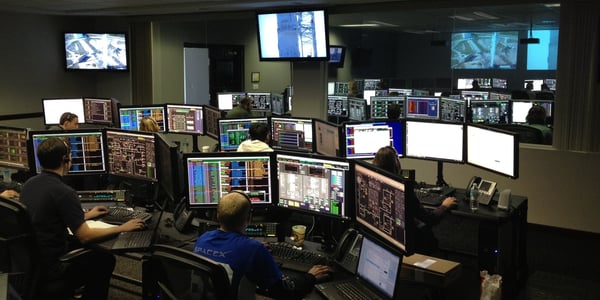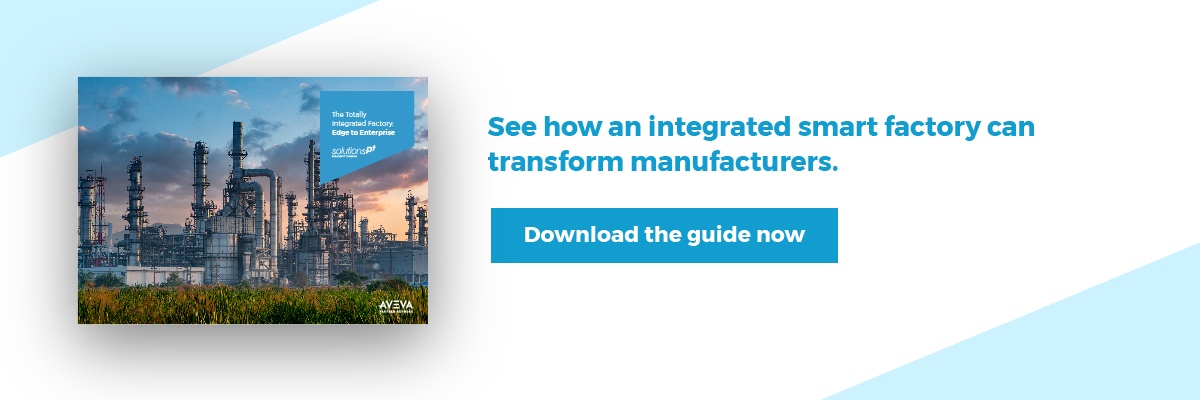In theory, control rooms are a space where operators can effectively monitor all the systems and information the factory relies on. However, control room operators in factories of all sizes are facing key frustrations that are holding their organisations back. Here are the biggest offenders.

1. Too Much Data
The sheer volume of data passing through factory control rooms can be overwhelming. It’s one thing to collect information, but it’s another to make sure it’s processed, analysed, stored and utilised in the right way.
Control room operators often must deal with a lack of clear visibility and representation of the information they’re handling. Without vital context, the processing of data is either strewn with errors or painfully slow which causes bottlenecks.
The lack of context might extend to the KPIs the operator is tasked with meeting too. If these objectives aren’t 100% set in stone, then it can be difficult for any operator to know where to invest their time and energy.
2. Too Many Screens
That mountain of data is traditionally processed across an unmanageable bank of screens. Remember, it’s not just SCADA systems that are tracked but also things like maintenance, quality, MES, CCTV and ERP. If each of these is done on its own individual screen, then things can quickly get out of hand.
What’s even more frustrating is when these screens don’t coordinate with the right context. For example, you might have to look at one screen to understand a problem being raised about an asset in a SCADA system. Then, you’ll need to physically move to another screen to look up maintenance tasks against that asset.
If these were linked more intuitively, then the process would be much smoother, and the operator would be a happy one.
If there are multiple screens, then there are likely to be lots of mice and keyboards too. The messier the control room, the harder it is for anyone to carry out their work effectively. For a closer look at a fully integrated, real-time data visualisation centre, take a look at this case study.
3. Operator Stress
Control room operators must keep a lot of different plates spinning. Production lines, equipment maintenance and alarms all need their attention to ensure everything runs as smoothly as possible. At times, this can feel overwhelming, and it can be difficult to know what the priority should be. This indecision can lead to friction which slows processes.
Managing all of these systems can be hard enough without added stress caused by physical discomfort. Often, control rooms are disorganised areas that have been haphazardly put together wherever a spare room is available.
This can lead to uncomfortable working environments which cause unnecessary added stress. These rooms need to be designed with ergonomics in mind. From the desks and chairs to screens and lighting, everything needs to be chosen with the operator in mind.
4. Outdated Systems
It’s no secret the manufacturing industry is facing a crisis. 78% of manufacturers are concerned about their ageing workforce and what this means for their business. With outdated systems, the only solution is to seek out and hire the next generation of talent before too much vital knowledge can walk out of the door with those that are retiring.
The issue organisations will face is attracting a younger generation who have grown up with cutting-edge technology at their fingertips. They expect systems with a modern look and feel, not outdated systems that are older than they are.
These legacy systems aren’t just tough selling points for new hires but they also present serious security risks. The older the system is, the easier it often is for devastating breaches to take place.
Operators can feel as though they’re working with one hand tied behind their back. They know the issues these systems pose but are unable to acquire the upgrades they need.
5. Empowering Field Operators
It’s not easy to solve difficult problems via radio communication. Without the right insight and visibility, operators can be working blind. Finding ways to provide for field operators who need assistance is a constant challenge.
It would be much easier if these field operators could take the control room with them as they carried out their work. This is possible with mobile devices, but many manufacturers don’t have the connectivity or technology in place to make this a reality.
Augmented reality is an option which sounds a little futuristic to some - but it’s possible now. In fact, wider digital transformations can turn traditional factories into smart factory. By embracing new software and systems, factories can be more efficient, productive, and better places to work.
We’ve created a free resource outlining what a smart factory looks like and the steps you’ll need to take to get there.
Integrated Factories
Click on the link below for your free look at smart factories. With a push in the right direction, your factory can be one that empowers staff and reduces inefficiencies. Are you currently getting the absolute most from your factory?
Download our resource now to see what you could be missing out on. 

![[FREE GUIDE] EMBRACING NEW TECHNOLOGY TO TRANSFORM YOUR FACTORY](https://no-cache.hubspot.com/cta/default/4487147/9d21f2d1-3cef-4512-b927-eb448cf098a0.png)
